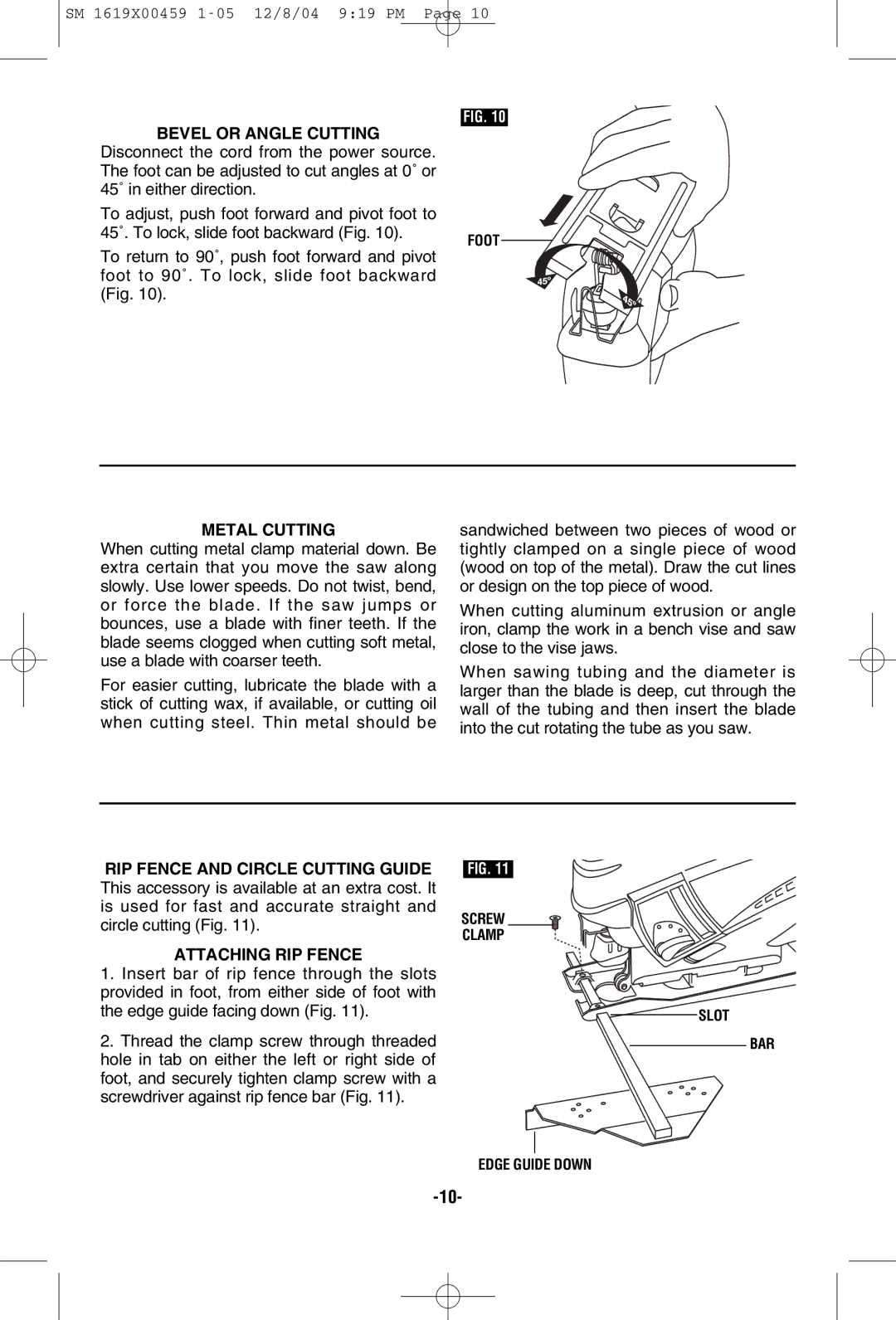
SM 1619X00459
BEVEL OR ANGLE CUTTING
Disconnect the cord from the power source. The foot can be adjusted to cut angles at 0˚ or 45˚ in either direction.
To adjust, push foot forward and pivot foot to 45˚. To lock, slide foot backward (Fig. 10).
To return to 90˚, push foot forward and pivot foot to 90˚. To lock, slide foot backward (Fig. 10).
FIG. 10
FOOT
METAL CUTTING
When cutting metal clamp material down. Be extra certain that you move the saw along slowly. Use lower speeds. Do not twist, bend, or force the blade. If the saw jumps or bounces, use a blade with finer teeth. If the blade seems clogged when cutting soft metal, use a blade with coarser teeth.
For easier cutting, lubricate the blade with a stick of cutting wax, if available, or cutting oil when cutting steel. Thin metal should be
sandwiched between two pieces of wood or tightly clamped on a single piece of wood (wood on top of the metal). Draw the cut lines or design on the top piece of wood.
When cutting aluminum extrusion or angle iron, clamp the work in a bench vise and saw close to the vise jaws.
When sawing tubing and the diameter is larger than the blade is deep, cut through the wall of the tubing and then insert the blade into the cut rotating the tube as you saw.
RIP FENCE AND CIRCLE CUTTING GUIDE This accessory is available at an extra cost. It is used for fast and accurate straight and circle cutting (Fig. 11).
ATTACHING RIP FENCE
1.Insert bar of rip fence through the slots provided in foot, from either side of foot with the edge guide facing down (Fig. 11).
2.Thread the clamp screw through threaded hole in tab on either the left or right side of foot, and securely tighten clamp screw with a screwdriver against rip fence bar (Fig. 11).
FIG. 11
SCREW CLAMP
SLOT
BAR
EDGE GUIDE DOWN
